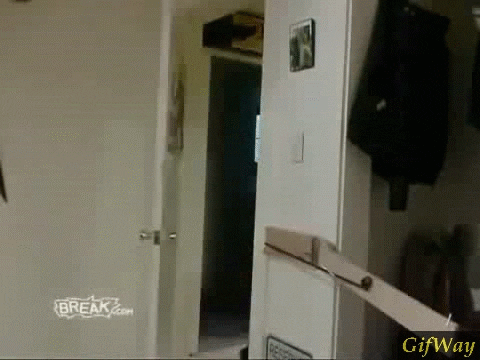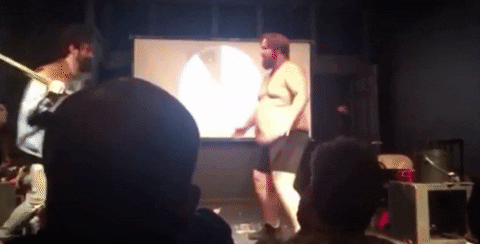How do you strengthen the groin?
One of the hardest areas to train is the groin. The reason being is that it is a hard-to-reach location for our musculature. It is also one of those areas that when it starts to get banged up or training for a sport that has constant repetitive movements it can become a massive problem. This can be a big issue.

When athletes have issues with their groin, it can become a long-term problem. It can be a problem that never goes away if the right protocol is not followed. At Garage Strength, we have figured out what we can do to the best of our ability to train hip adduction and hip abduction.
Most of the problems we have experienced at Garage Strength have been dealt with almost exclusively related to hip adduction. Think about sitting down with the leg wide and bringing the leg in. This makes us immediately think about the role behind the groin: we have brevis, longus, magnus, pectineus, and gracilis muscles which will essentially be responsible for flexing and extending the femur, extending our hips as well depending on how the femur is related to the pubic bone. There are a lot of factors at play.
That is why all the focus comes into someone who has to kick, like a soccer player, or a rotating thrower. We even have field athletes cutting on the field. We have to train and strengthen the groin to help bring the leg in faster, help with femur flexion and extension, hip extension, and athletes who are cutting rapidly. Agile athletes have to have really potent groin adduction.
So one big key is to warm up properly. For instance, a global gym’s hip abduction machine and hip adduction machine are awesome machines to do this. Now if the machine is not accessible, sideband walks can go a long way. Also using a nice 90-90 foam rolling or static stretch. Hip adduction with the band attached to the knee and anchored to an immovable object goes a long way as well.
Now let’s take a look at the five exercises to bulletproof the groin.
5. Abductor Squeeze Medball To Knees
We like to utilize the abductor squeeze. This can be done by putting a medball between the knees. When a medball is put between the knees the body has to squeeze the knees tight to hold the ball. We can pass the medball into the knees from a hollow body rock or a v-up. Going back and forth, moving the medball from the knees to the hands and back to the knees, squeezing the ball again.
This movement is slightly easier but is great for building a progression. Doing four to five sets of fifteen to twenty reps will build a great base of strength endurance. As the skill level and strength improve, start adding weight to the medicine ball, trying to work all the way up to a twenty-pound medball. The next thing we know, our hip adduction right around the knees becomes more effective and helps stimulate the groin area.

4. Horse Stance Squat Slow Eccentric
This movement is stolen directly from Kevin Simons, one of the best weightlifting coaches in the entire country. A horse stance is almost like a martial arts stance. We have wider feet with the toes turned out slightly. We want the torso very upright and much more erect. From there we squat as deep as possible while keeping the torso upright. Do this for two to three sets of fifteen to twenty reps with a slow eccentric. We use this movement to progress to toes out back squats.

If the hip mobility is not there to do this movement, DON’T DO IT! Now people with hip mobility can almost put the heels together doing this movement. This will light up the groin and trigger the groin to get a lot stronger.
3. Copenhagen Plank
This is a movement that a lot of athletes need to do to reap the benefits. Being able to hold the Copenhagen plank position, keeping the hips nice and parallel with the feet goes a long way. We recommend starting with the feet and hips around twelve inches off the ground for a duration of thirty to forty seconds on each side for two or three sets.

To progress this movement over time is to sink the hips and bring them back up to add an eccentric and concentric component to the movement. The hip may pop a little. The movement is challenging. Slowly build into it. Over time, the movement can be overloaded by raising where the feet will go, focusing on where the hips go. Just slowly progress into the movement.
2. Banded Groin Slayer
We created this movement at Garage Strength. We made this movement specifically for our discus throwers. We use our PowerLastic bands to do the movement. The movement is essentially the hip adduction machine with a slow eccentric. We put a band wrapped around each ankle attached to an immovable action on each side.
We squeeze the groin nice and tight and perform a slow eccentric. We like to cross the feet to get more activation and a squeeze at the top. The squeeze and hold creates a more isometric muscular action. Alternate the feet going over and under each other. Do this for two to three sets of ten to sixteen reps.

Now if the banded groin slayer can’t be done, we recommend a single-leg squat with the toe pointed out quite a bit. Focus on a slow eccentric in a very controlled position. People will try to turn the torso but they need to stay neutral to feel the groin area being hit. Again, use this as a progression, starting nice and slow. Really focus on an upright torso as well to target the hip adductors a little bit more. Do this movement for two to three sets of five to ten reps on each leg.
1. Banded Sliding Cossack Squat
We love this movement. We do a Cossack squat that slides. The sliding foot/leg will be on a furniture slider, a towel on the linoleum, or a slide board, whatever works. As it slides out on the furniture slider and we get nice and deep with the hips to be brought back in, as that happens, we can have our ankle within a PowerLastic band. The PowerLastic is around the ankle and then attached to an immovable object. Now as we come back in, standing up the squat, the sliding leg will feel the tension from the band start to catch. This is a challenging movement that should be done for two to three sets of five to seven reps on each leg.
We recommend starting this movement as just a normal Cossack squat. From there, progressing to a sliding Cossack squat without a band. Once those two progressions are solid and strong, then and only then is it okay to add the band.
Just remember, as we are standing up the squat at the top, the ankle that is banded up needs to be felt in the hip which is squeezing nice and tight with a solid mind-muscle connection.
Recap
Utilize these exercises properly. Start with a nice, easy warm-up before tackling these five excellent exercises. We recommend doing these movements once or twice a week. Just remember to slowly work through the progressions, especially athletes with groin issues. There is no need to go all out right away, slowly build into it, and then appreciate how well all of these movements bulletproof the groin.
DANE MILLER
Dane Miller is the owner and founder of Garage Strength Sports Performance. He works with a select handful of clients on building comprehensive programs for fitness and nutrition. Several times a year he leads a workshop for coaches, trainers, and fitness enthusiasts.


